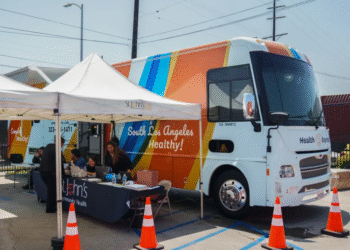If you feel like you’re seeing more people with stomach issues recently, you may be right. We’re in the midst of peak norovirus season.
Norovirus, nicknamed the stomach flu, is a highly contagious illness that can cause you to experience a host of unpleasant symptoms, like vomiting, diarrhea, and stomach cramps.
Here’s what you should know about how the virus is affecting Southern California.
What’s the spread like?
California’s stomach flu season goes from November to April, according to the state health department. Norovirus has also received attention recently after the FDA issued multiple oyster recalls, and an outbreak occurred at a Pasadena wildfire evacuation center.
Dr. Elizabeth Hudson, regional chief of infectious diseases for Kaiser Permanente Southern California, said the illness spreads well in very tight areas.
“ It’s pretty much one of the leading causes of any kind of [gastrointestinal] illness in the U.S., and has been for many, many years,” she said.
Exactly how much norovirus is spreading in California can be tough to gauge. Health departments only track reported outbreaks, which the CDC defines as two or more similar illnesses resulting from a common exposure.
For example, the California Department of Public Health recorded 55 laboratory-confirmed outbreaks from January to November last year, which was fewer than the same time period in 2023.
Matt Conens, a department spokesperson, said the numbers don’t reflect the overall community burden of norovirus because most cases are never tested.
With the ones that are, Hudson said she’s seen positivity percentages go up over the last several months — at times ranging from 10% to 25%.
“A lot of people don’t necessarily seek care. They kind of say,…
Read the full article here







